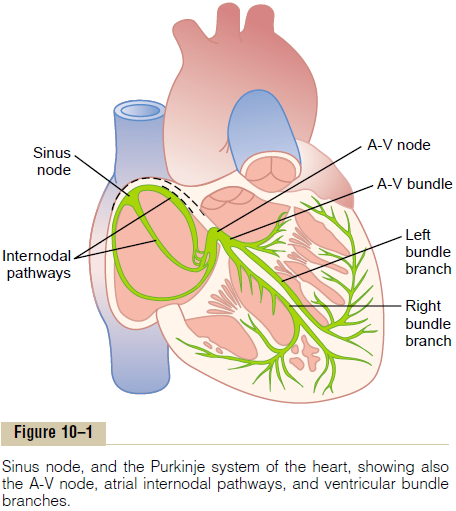Chapter: Medical Physiology: Rhythmical Excitation of the Heart
Internodal Pathways and Transmission of the Cardiac Impulse Through the Atria
Internodal Pathways and Transmission of the Cardiac Impulse Through the Atria
The ends of the sinus nodal fibers connect directly with surrounding atrial muscle fibers. Therefore, action potentials originating in the sinus node travel outward into these atrial muscle fibers. In this way, the action potential spreads through the entire atrial muscle mass and, eventually, to the A-V node. The velocity of con-duction in most atrial muscle is about 0.3 m/sec, but conduction is more rapid, about 1 m/sec, in several small bands of atrial fibers. One of these, called the anterior interatrial band, passes through the anteriorwalls of the atria to the left atrium. In addition, three

other small bands curve through the anterior, lateral, and posterior atrial walls and terminate in the A-V node; shown in Figures 10–1 and 10–3, these are called, respectively, the anterior, middle, and posterior inter-nodal pathways. The cause of more rapid velocity ofconduction in these bands is the presence of special-ized conduction fibers. These fibers are similar to even more rapidly conducting “Purkinje fibers” of the ven-tricles, which will be discussed.
Related Topics